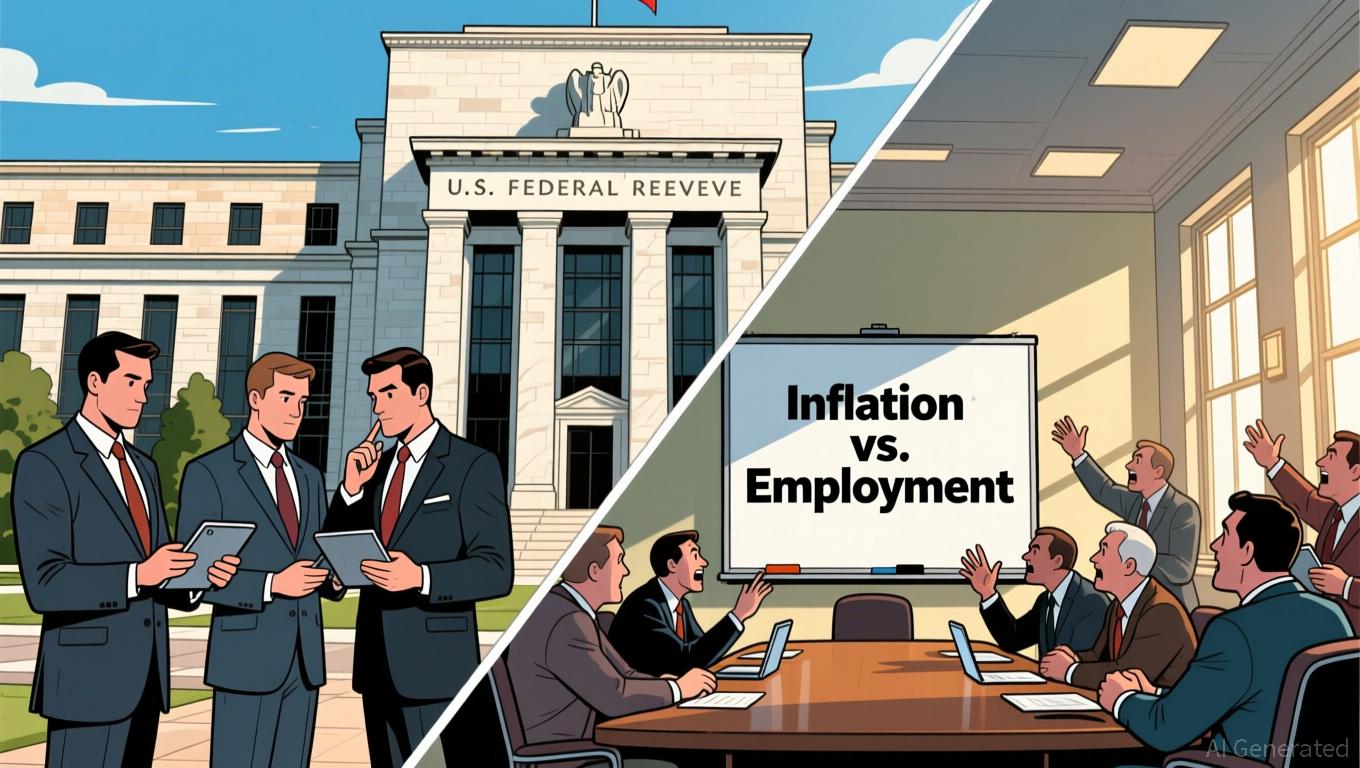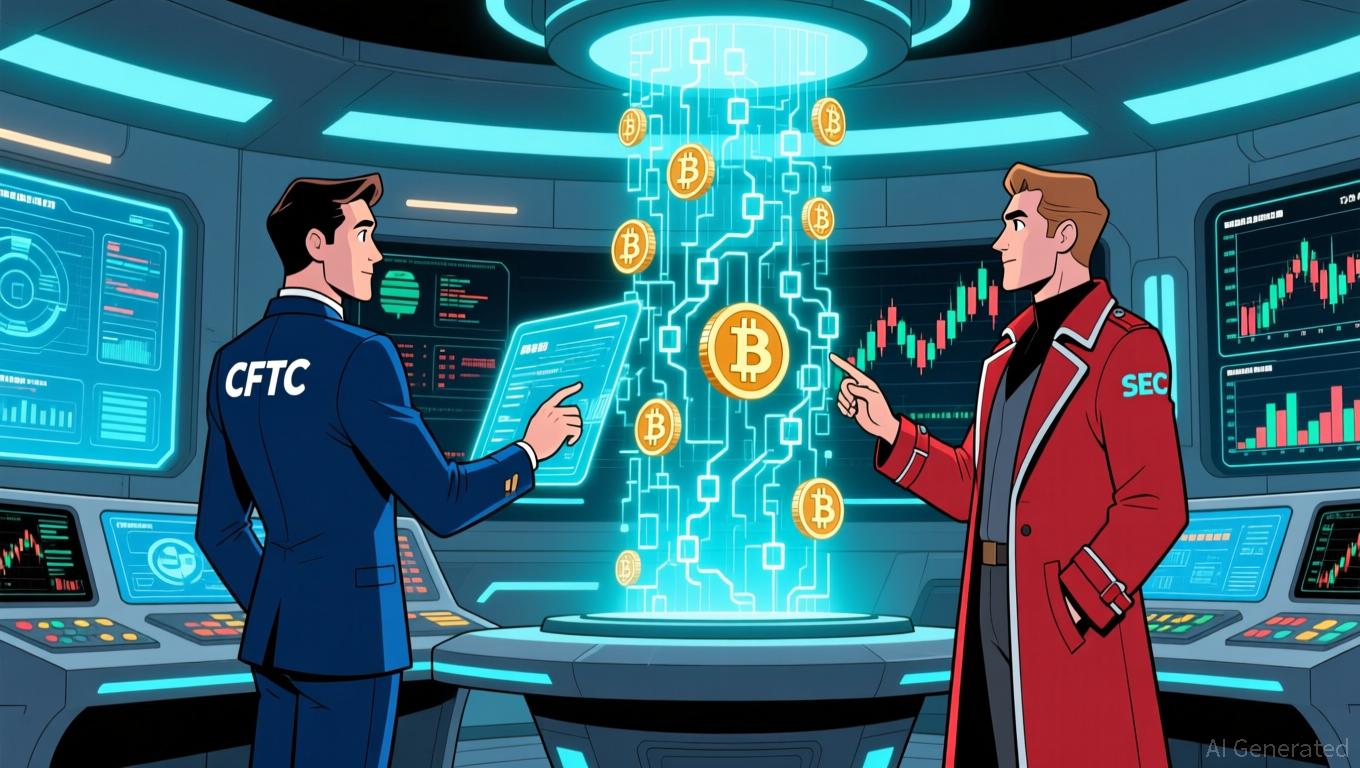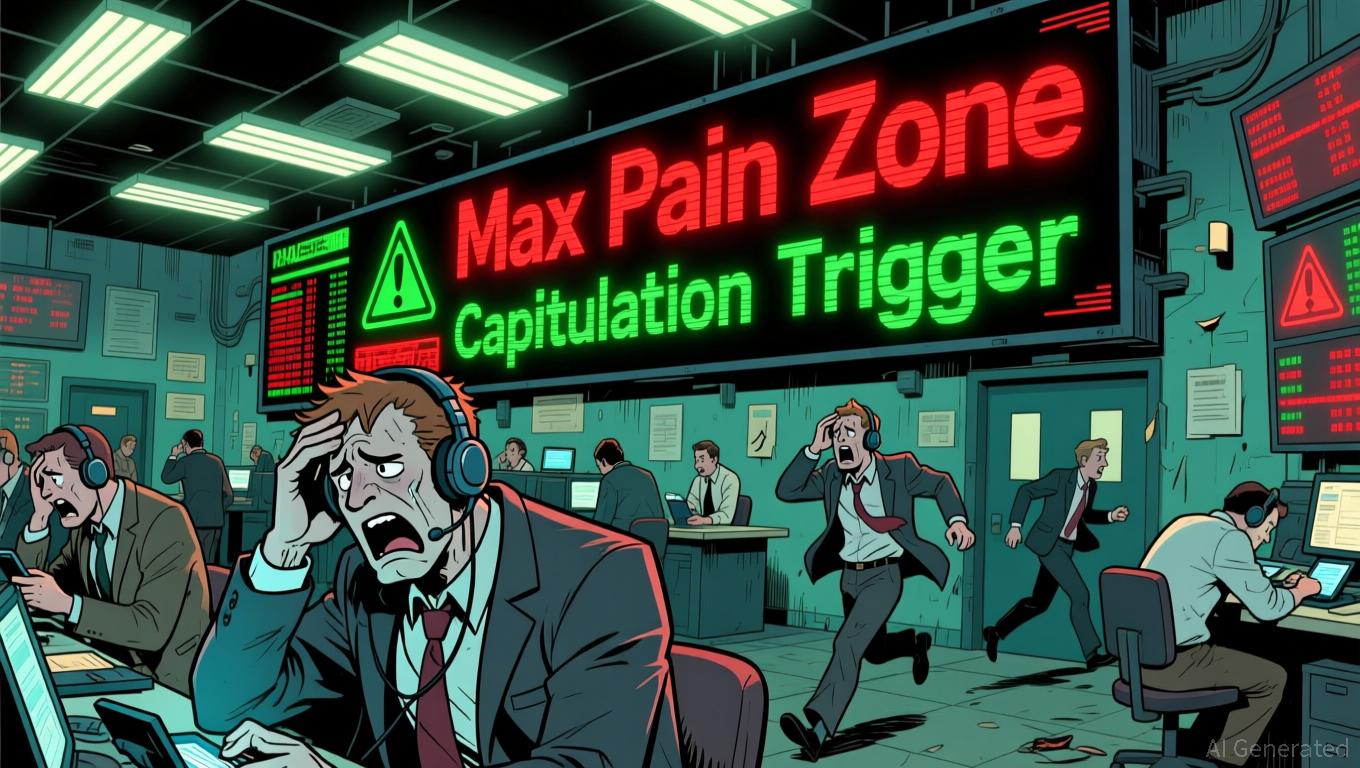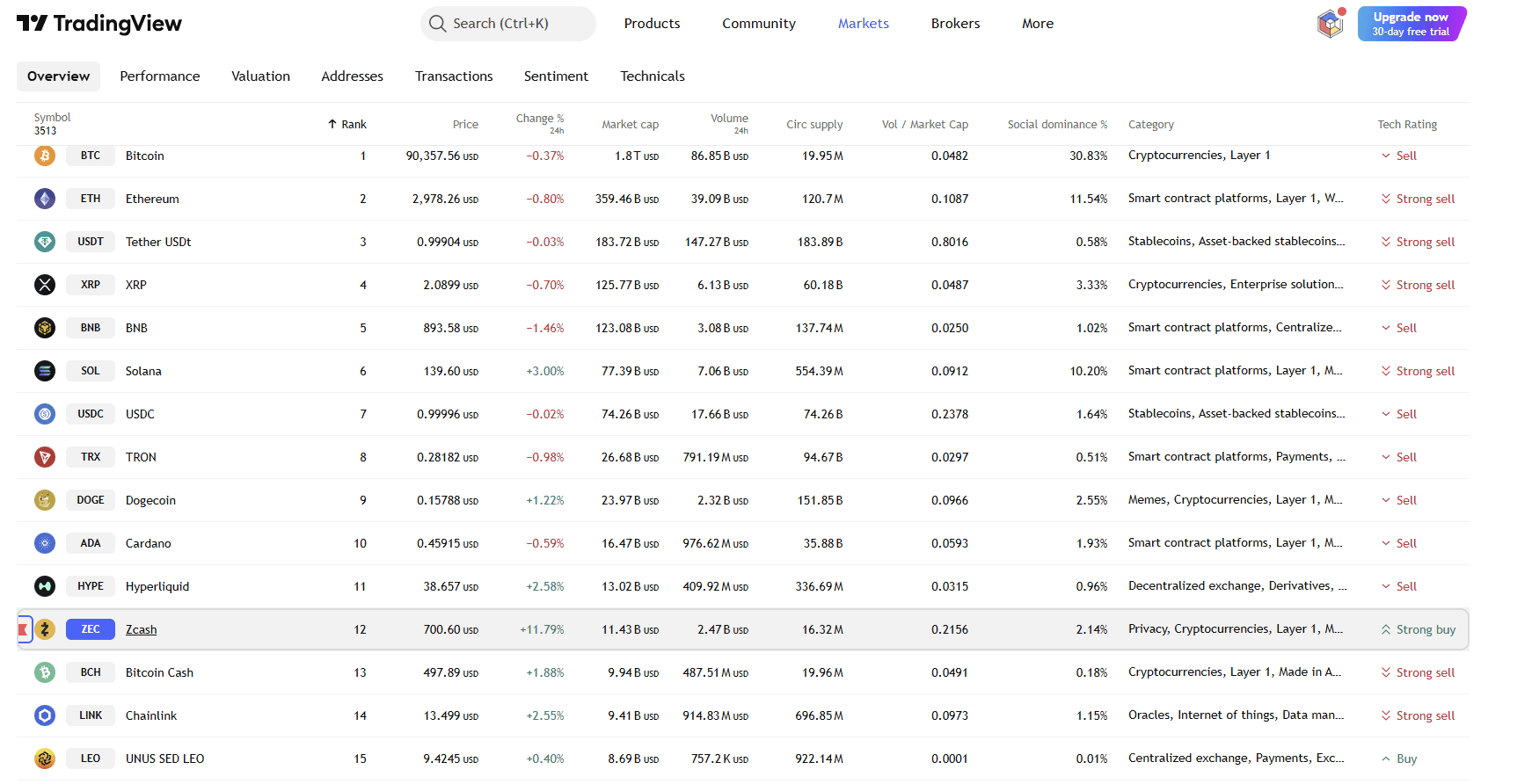Fed Faces a Test of Trust: Managing Divided Rate Views and Ethical Controversies
- Fed's October rate cut revealed 10-2 policy split, balancing inflation risks against labor market weakness amid 2%+ inflation. - Ethics scandal emerged over Kugler's stock trades during blackout periods, triggering IG investigation and accountability concerns. - Political tensions intensified as Kugler's resignation accelerated Trump-aligned Miran's board seat, complicating policy governance. - December meeting faces uncertainty: some advocate 25-basis-point cut for labor support, while others warn again
The Federal Reserve's latest policy discussions have brought to light growing disagreements within the institution regarding the direction of interest rates. The central bank's decision in October to lower rates by 25 basis points exposed sharp contrasts among officials, with some prioritizing inflation risks and others more concerned about a weakening job market. The minutes from the October 28-29 gathering, made public on November 19,
Adding to these difficulties is a blow to confidence in the Fed’s ethical standards, after it emerged that former Governor Adriana Kugler breached the central bank’s trading regulations. Kugler, who stepped down suddenly in August to allow Trump supporter Stephen Miran to join the Board,
The incident has fueled demands for change. Senator Elizabeth Warren, a persistent advocate for greater Fed transparency, renewed her call for bipartisan measures to tighten ethics rules, while Senate Banking Committee Chair Tim Scott stated that the episode "demonstrates that the Fed still lacks the safeguards or culture of responsibility the public expects"
Looking forward, the Fed’s December meeting remains in the spotlight. Some members, such as Governor Christopher Waller, believe another 25-basis-point cut is necessary to shield the labor market from further decline,

As the Fed steers through these complicated circumstances, its reputation faces two major tests: keeping inflation in check and rebuilding public confidence in its ethical practices. With internal rifts exposed and external oversight increasing, the central bank’s upcoming actions will be judged not only for their economic consequences but also for their effectiveness in upholding the institution’s credibility.
Disclaimer: The content of this article solely reflects the author's opinion and does not represent the platform in any capacity. This article is not intended to serve as a reference for making investment decisions.
You may also like
CFTC’s Expanded Crypto Responsibilities Challenge Regulatory Preparedness and Cross-Party Cooperation
- Senate Agriculture Committee confirmed Trump's CFTC nominee Michael Selig along party lines, advancing his nomination for final Senate approval. - Selig, an SEC crypto advisor, would expand CFTC's oversight of crypto spot markets under the CLARITY Act, positioning it as a key digital asset regulator. - Democrats raised concerns about CFTC's limited resources (543 staff vs. SEC's 4,200) and potential single-party control after current chair's expected resignation. - Selig emphasized "clear rules" for cryp

Bitcoin Updates: Bitcoin Approaches Crucial Support Level Amid Heightened Fear, Indicating Possible Recovery
- Bitcoin fell to a seven-month low near $87,300, testing key support levels amid heavy selling pressure and extreme bearish sentiment. - Analysts highlight a "max pain" zone between $84,000-$73,000, with historical patterns suggesting rebounds after fear indices hit annual lows. - The Crypto Fear & Greed Index at 15—a level preceding past rebounds—aligns with historical 10-33% post-dip recovery trends. - A 26.7% correction triggered $914M in liquidations, but a 2% rebound to $92,621 shows resilience amid

Bitcoin ETFs Are Back: Did the Crash Just End?

Should You Buy ZEC During the Market Crash? Here’s What’s Really Happening
